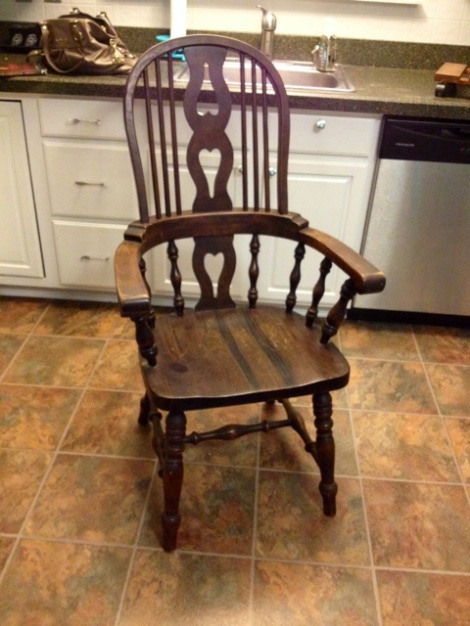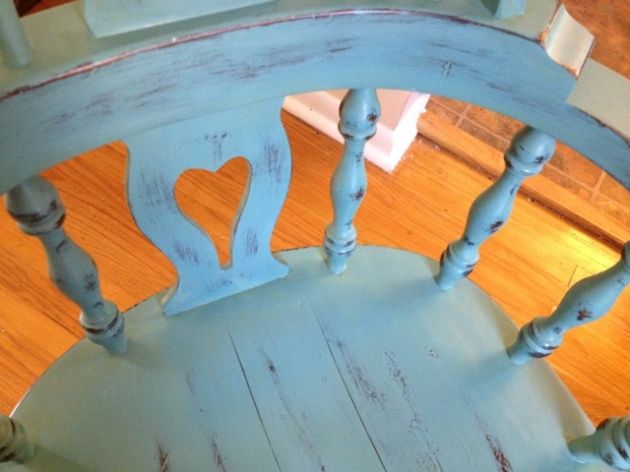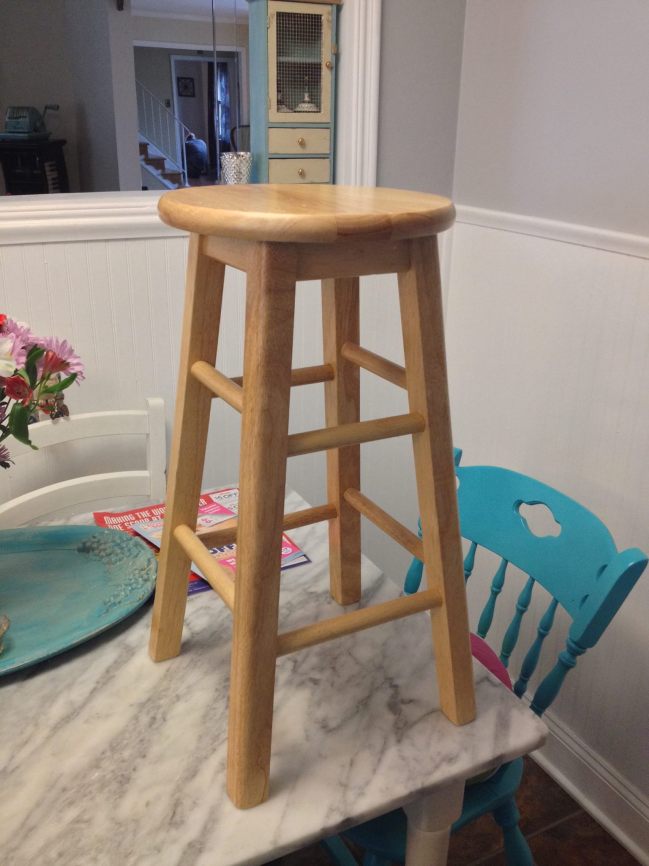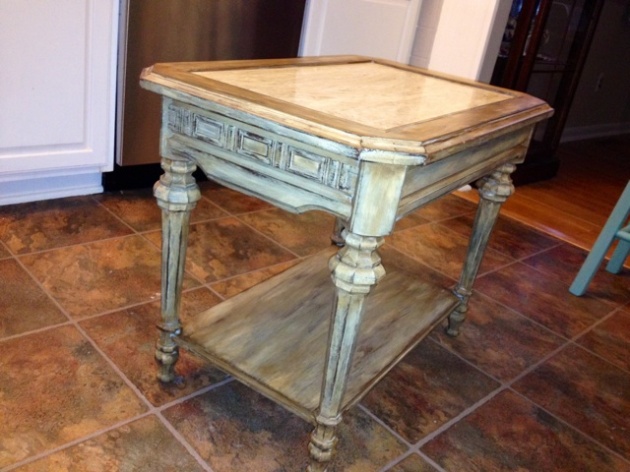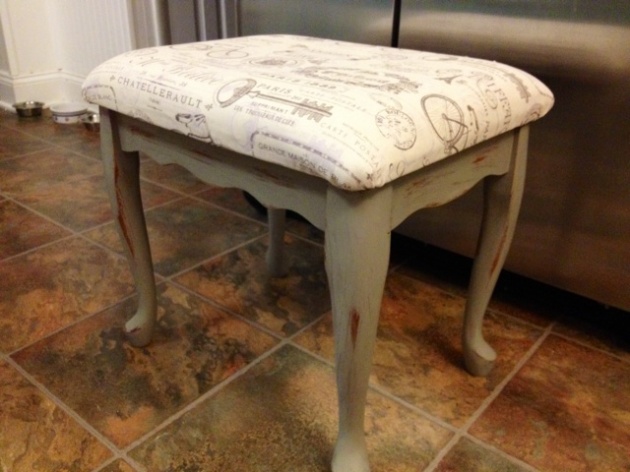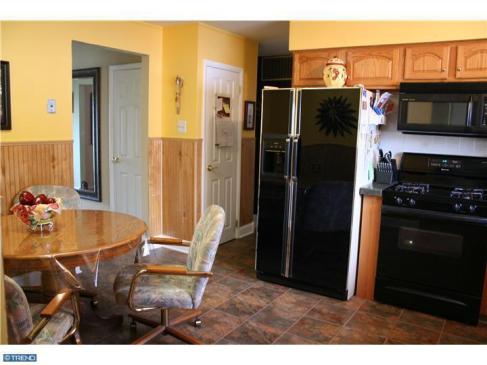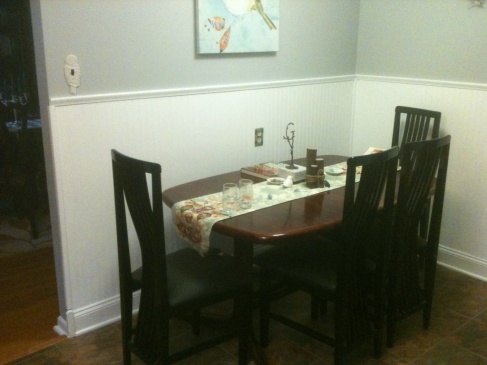Hello, my precious little blog! I’ve missed this place. I’ve also missed having, you know…a life.
I’m always really inspired in the summertime, when I’ve got vacations on the brain and plenty of time to myself to get creative!
In the interest of beating the wintertime blues (as NJ has spontaneously morphed into an offshoot of Antarctica), I want to talk retro, I want to talk kitchens, and I want to talk 1950′s design elements. *cue Julie Andrews singing “My Favorite Things”*
They say style is cyclical. “They” are right! It seems that every number of years, things come back into vogue again. Maybe it’s just me, but I feel I am seeing this constantly with the 1950′s! ESPECIALLY when it comes to kitchens, so much of what is popular right now harkens back to this time period. I super-love the decor/design of the 50′s…from fashion to home design. I also have to say that while I did not set out or plan to add some 1950′s elements to my kitchen during the remodel, it definitely ended up that way.
Let’s go back in time a bit. I’m going to show you some ads and photos of 50′s kitchens so we have a baseline to work with:
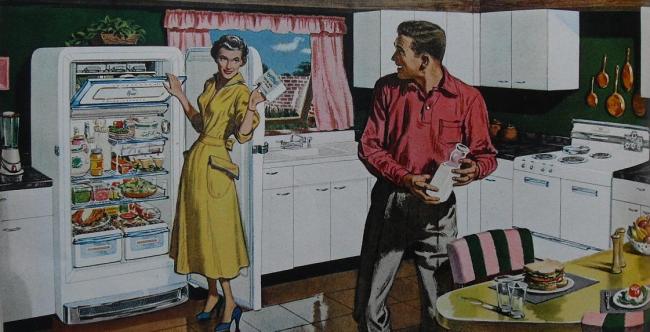
Ahhh yes, the 50′s “kitchenbitch”. A true classic. What I find intriguing is the crisp, white look. This kitchen would not look out-of-place in a kitchen today!
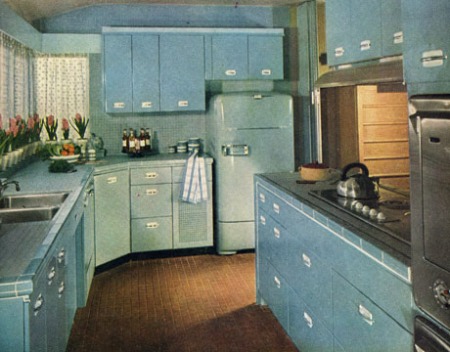
I can’t tell you enough how much I adore this kitchen. the 50′s saw the rise of metal cabinets in fun colors, such as this Tiffany blue. The fridge just brings it all together. Look on the right and you’ll see the awesome stainless steel wall ovens…which are highly desirable right now.
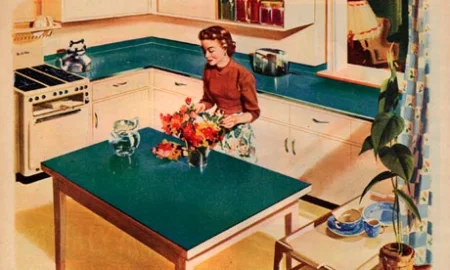
Another “white cabinet” kitchen….this time with tea/green formica counters and an island *very trendy back then*.
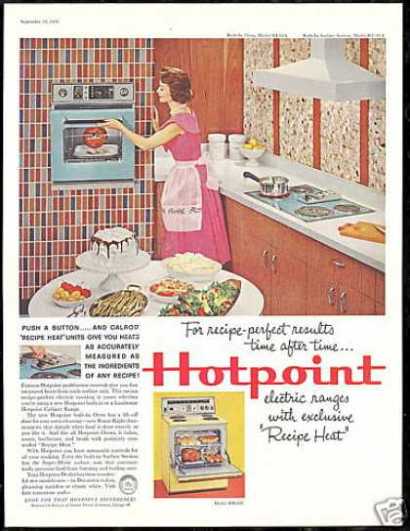
50′s “Hotpoint” ad featuring their colorful wall oven. My obsession with the color aside, they are coming back in popularity. Notice something else? Check out the mosaic wall design. Flip the pattern horizontally and you have today’s tile backsplash. I always fly into an unnecessary rage when people buy an old kitchen with an awesome old wall oven and then RIP IT OUT. WHY?!
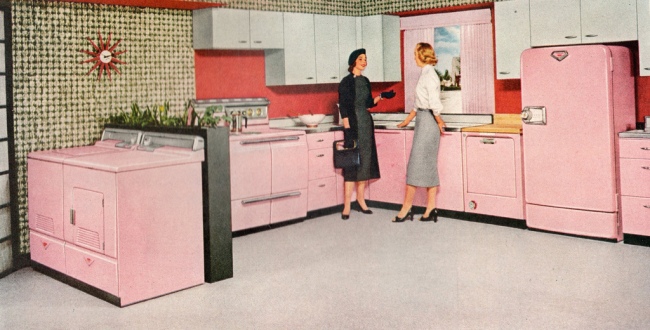
1950′s “pepto pink”. A true classic. Also popular in bathrooms and tile. Hey, this was the housewife’s domain, and if she wanted a pink kitchen, she got one!
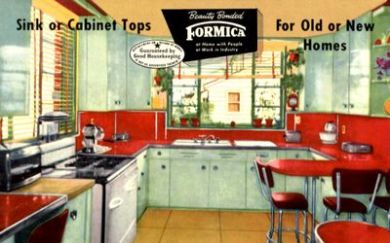
This is an old Formica ad. It was the fashionable thing to have. Formica actually grew to NOT be a trend, as it was the go-to material for countertops for 50+ years! Today, most people want natural stone or some form of cement/silestone. What I also think is fun about the ad is that it features the great “retro red” pop of color so popular in this day (carried over from the 40′s).
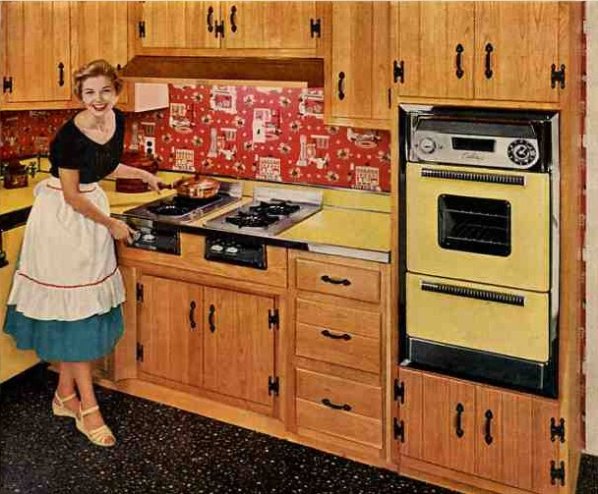
Changing gears, this ad focuses on yellow accents (Formica and wall oven) but features wood cabinets with the classic 50′s hinges and hardware. Sweet wallpaper, no? *yikes*
When you really start to examine the photos, you can’t help but see eerie similarities to what is trending today! Every decade has its moment in the proverbial sun and its own particular nostalgia. However, something about the 50′s seem a little more lasting (and somehow still relevant).
Fast forward to 2014: A kitchen remodel is the most expensive (and sought after) home renovation. The trouble is that they’re so costly! To completely rebuilt a basic kitchen will easily cost you $30,000. A remodel on the higher end usually tops $50,000. I’ve discussed kitchens a few times before.This entry is more for those who don’t WANT to spend a small fortune, but if you’ve got a big budget, you can work with this information, too!
If you want something other than beige granite, stainless steel appliances, travertine backsplash, and darker wood cabinets…consider bringing one or more 50′s elements into your kitchen! You can do it in a big way or do it in a more subtle fashion. I personally feel it’s the most fun with color added, but hey…your call.
Whether you bought an older home and are working with what you have, or want your newer kitchen to travel back in time, here are some awesome renovated kitchens with elements borrowed from the 50′s:
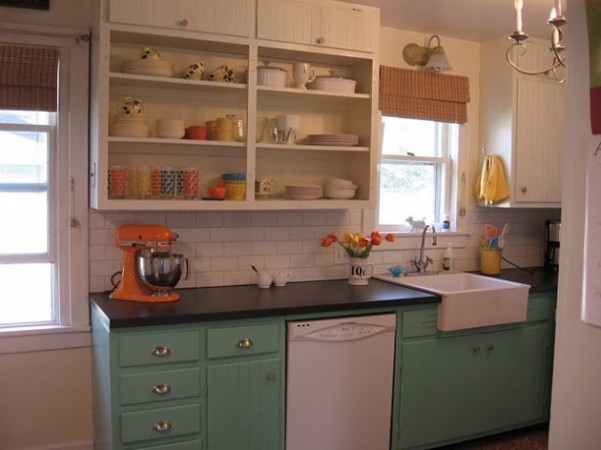
The above kitchen is the stuff of my vintage fantasies! I love the painted cabinets, the hardware, the apron sink, and the removed cabinets on top to make room for open shelving that houses fun, colorful accents. The white subway tile backsplash keeps it simple but fits perfectly, and the white appliances are a perfect choice here. How much fun is that orange Kitchenaid?! These people get an A+++ from me! They took an older kitchen and redid it in a way that stays true to the era but *belongs* today, too.
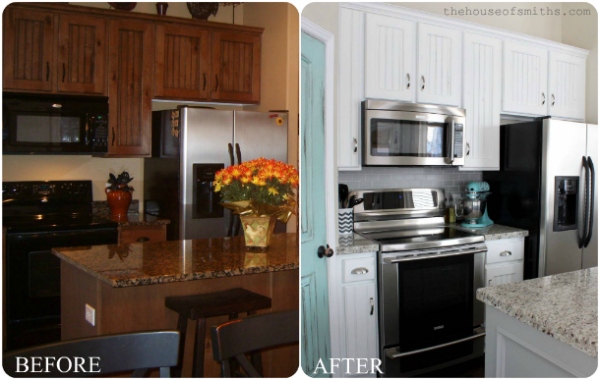
Now, you may notice that the “before” photo is the “everykitchen” that is sought after today. It’s tasteful, it’s pretty, but it’s also rather anonymous. I love these people for their excellent and MUCH more fun “re-vamp”! They added shiny new stainless appliances (which are somehow a perfect modern-retro marriage), painted the cabinets white, chanegd the hardware to stainless steel, and (my favorite change), chalk-and-distress painted their pantry door. GENIUS! Perfect vintage touch! What is striking is how different the granite looks after the re-do…it’s the same counter-top, but the white, bright remodel changes its look.
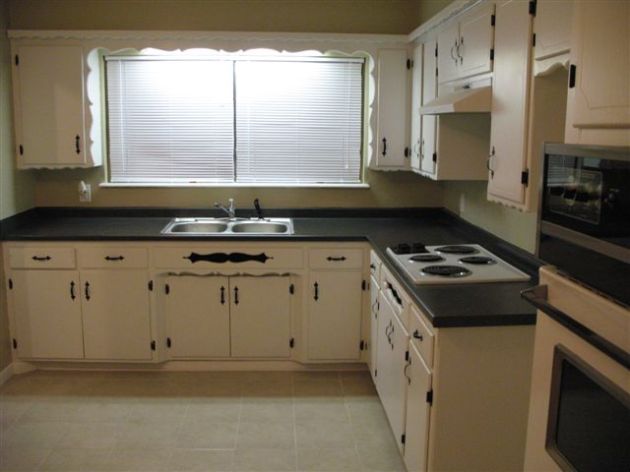
Talk about preservation! These homeowners did a gorgeous job preserving the style and integrity of their 50′s kitchen while still creating something stylish and relevant. They kept and painted their original hardware and exposed hinges. They painted the original wood cabinets off-white. They kept their still-working wall ovens and old gas cooktop. The scallop details that frame the window are pretty and unique. The best thing they did was paint their old counters to an awesome matte black that “fits” perfectly. A re-vamp like this costs nearly nothing!
I want to feature the kitchen of a friend of mine (hi Kristen!), because she is a perfect example of the amazing transformation that countertop-painting can bring about!
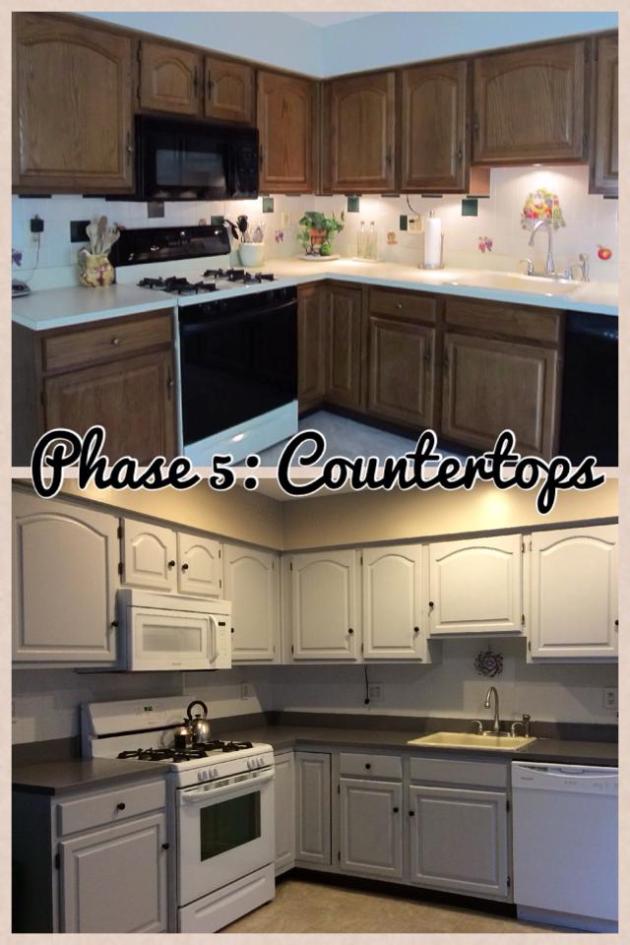
I’m 100% being honest when I say I don’t think I have ever seen such a huge transformation for so little money. You may wonder what this has to do with “retro”? The elements are there in a subtle way, with the brightened cabinets and brand-new, glossy white appliances (white/glossy was big in the 50′s, as it looked crisp and clean). It looked awesome before she painted the counters, but painting them completed it all. It took time and elbow grease, but her “I may as well try it, anything is better than what I have” attitude paid off! The resulting lovely shade of grey is the perfect complement to her shiny new appliances and grey cabinets. The kitchen has taken on a more “French country” feel. Let this photo stand as a testament to the fact that a kitchen that looks completely different needn’t break the bank. If you have bad, ugly, or old countertops but don’t want to shell out thousands right now for new ones, get your paint on (make sure to seal it afterwards). You can go classic and elegant like Kristen did, or try out a fun pop of color. The best part? If you don’t like it, try another color  There are also countertop-refinishing/refacing kits you can buy specifically for this type of project.
There are also countertop-refinishing/refacing kits you can buy specifically for this type of project.
Back to more 50′s/vintage inspiration:
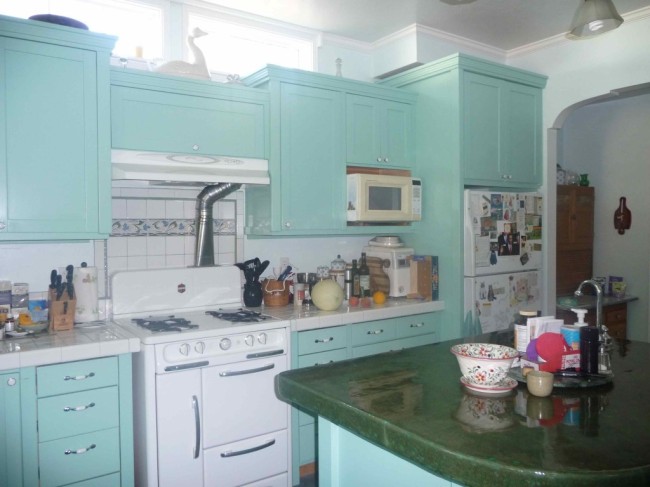
These homeowners painted their old wood cabinets while keeping an original retro stove and backplash. They painted their island and left the green enamel top as-is. Not a fan of that, but hey…it works for them. The biggest problem in this kitchen is THE CLUTTER THAT MAKES MY BRAIN EXPLODE and the yellowed, cream microwave. That should be white, and this kitchen needs a good “organize”, because it’s otherwise charming.
Here’s just an example of how brightening up your kitchen space can take your layout from “wind tunnel” to “fresh, clean, and open”:
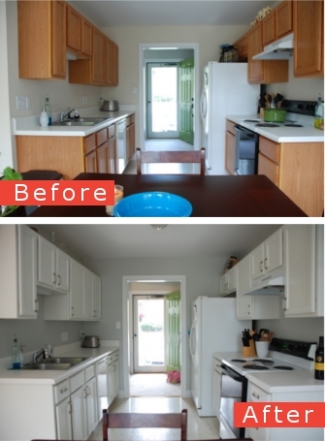
Their goldenrod accessories are a nice pop of color, too!
If you’re not doing an actual reno but want to add in a few fun 50′s elements, consider doing so with accessories! I’ve done some of this in my own kitchen and will add a few more soon.
The Bella company makes cooking/kitchen appliances in excellent colors with a vintage-feel:
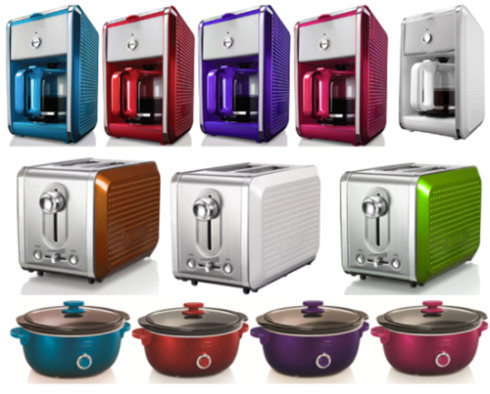
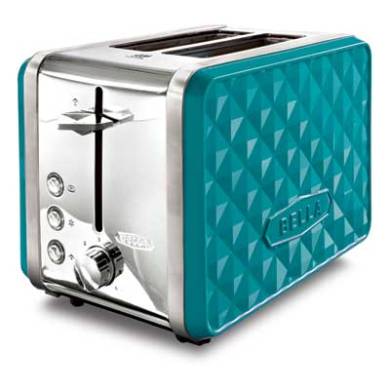
(I am thinking of buying that toaster for my own kitchen. This line is affordable and accessible).
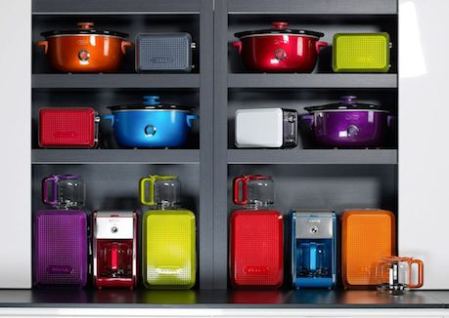
Another current trend is accessories that feel nostalgic:
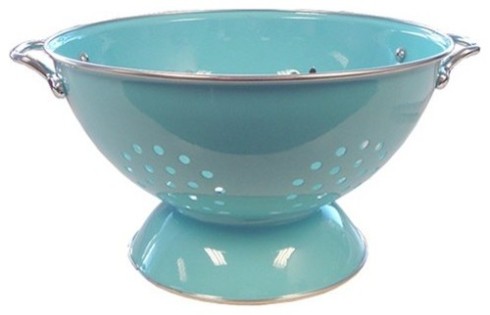
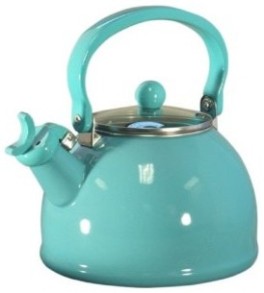
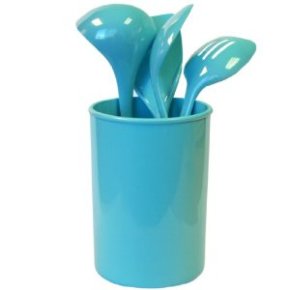
(I am clearly partial to aqua blue. Please excuse my blatant bias!)
Appliances that feel vintage are gaining in popularity:
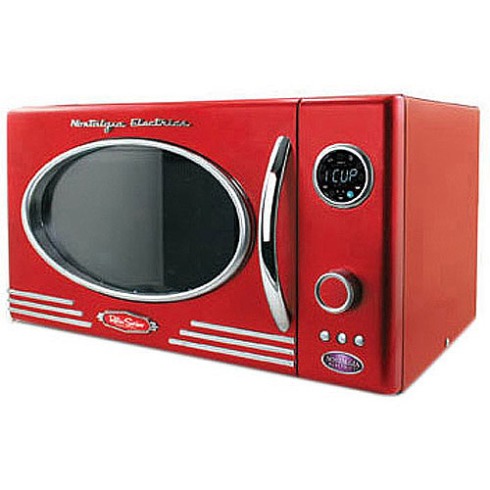
Fantastic microwave by Nostalgia Electrics.
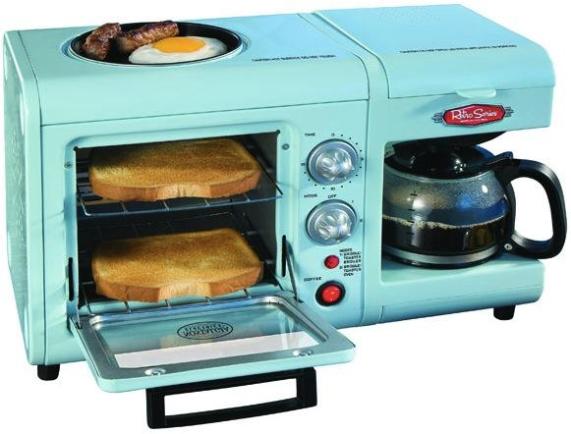
How. Freaking. Genius. It’s literally a breakfast station…coffee, toast, and eggs/meat on the top griddle. All wrapped up in an inexpensive and whimsical package.
If you’ve got VERY deep pockets, you can outfit a kitchen in brand-new appliances that look vintage…by Big Chill:
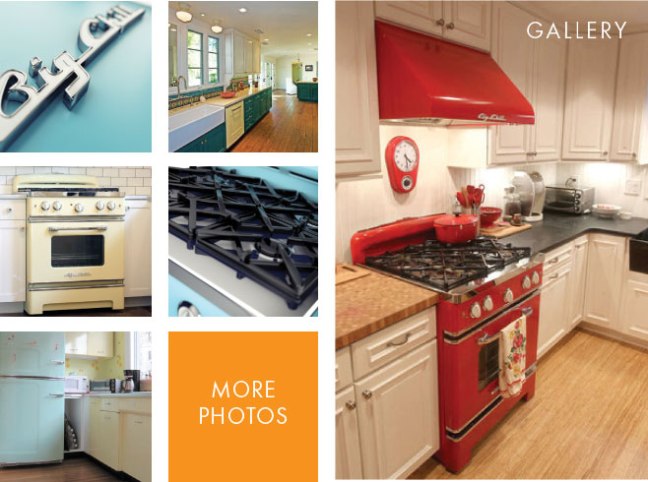
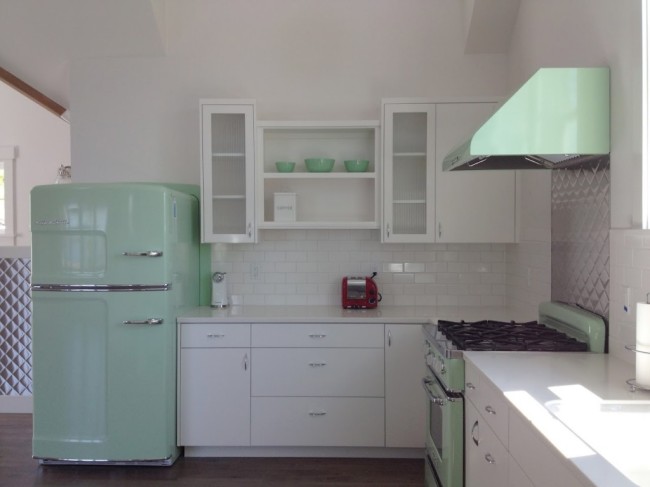
(I adore the mint green!)
They’ll set you back $3,000 for the fridge, $4,000+ for the range, $600 for the microwave, $1,700 for the dishwasher, $1,400 for a vent hood, and $3,000 if you choose a wall oven. They are STUNNING, but my goodness…the prices raise my blood-pressure!
If you want affordable nostalgia, GE designed a line called “Artistry” which features a choice of black or white appliances that have a 50′s feel for VERY little money…you can easily get the whole kitchen full of appliances for about $2,000-$2,200, which is great!
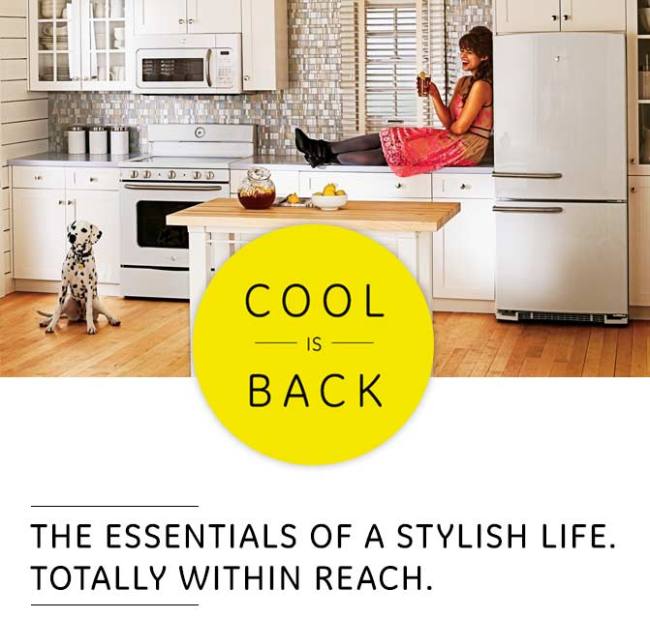
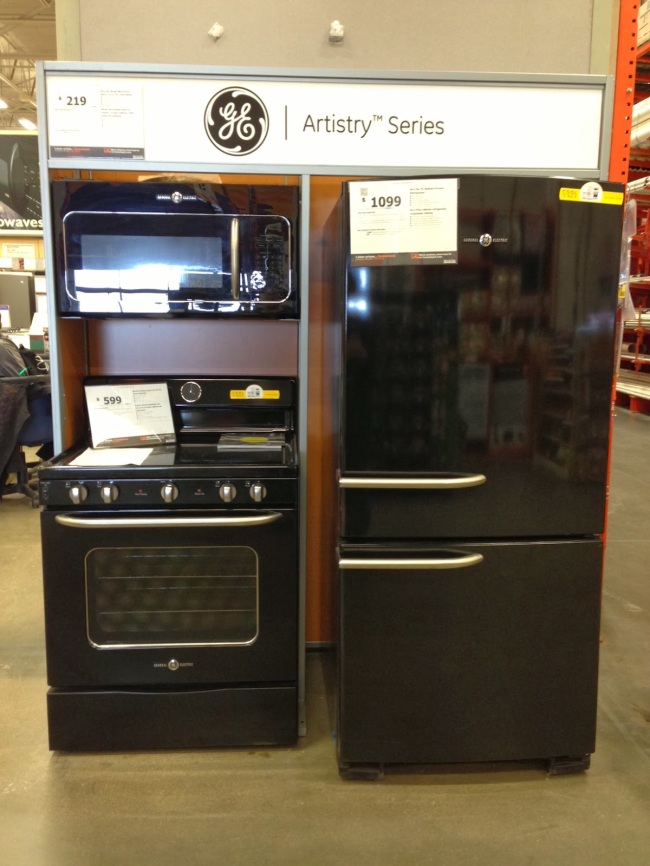
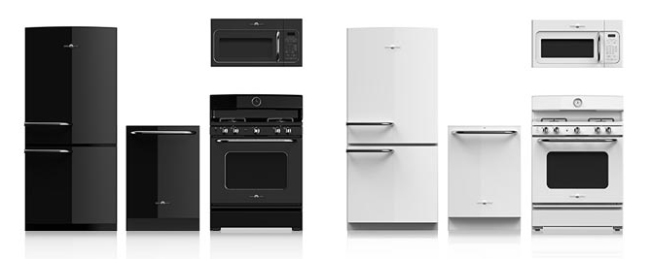
I fully admit that if I was not set on stainless for the look I wanted, I’d have bought these in white, hands-down, no-contest.
Another easy way to add a vintage element is with a colorful and endlessly useful Kitchenaid mixer!
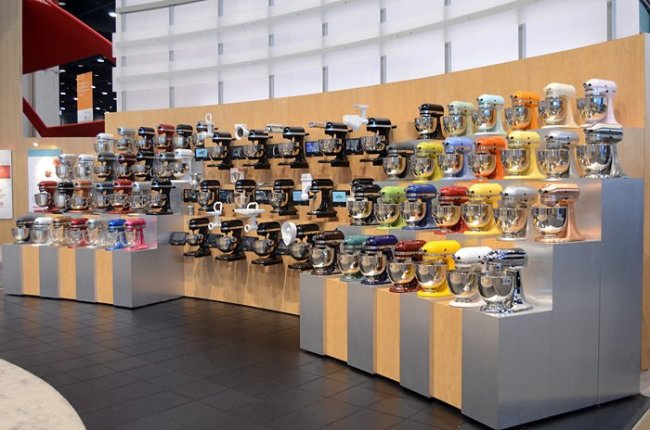
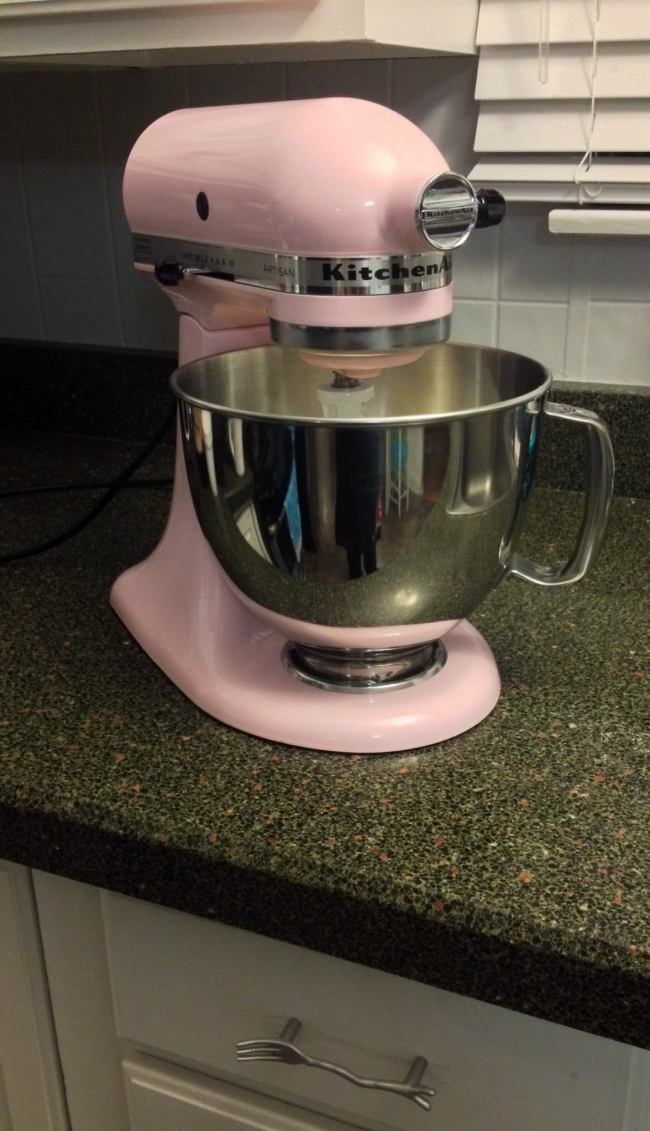
My hubby bought me this pale pink breast-cancer edition mixer…I named her “Loretta”:
In conclusion, don’t shy away from playing around with 50′s elements in your kitchen, because the results can be inspiring and fabulous! Remember that it doesn’t take a lot of money to DIY a kitchen from something cringeworthy to something you’re proud to show off. I’ve ALWAYS loved the style of the 1950′s…all my life. I did not realize I was going in that direction when we re-did our kitchen, but the end-result clearly shows a lean to vintage/retro. I leave you with a reminder of my kitchen “before and after”, that cost us a measly $2,500:
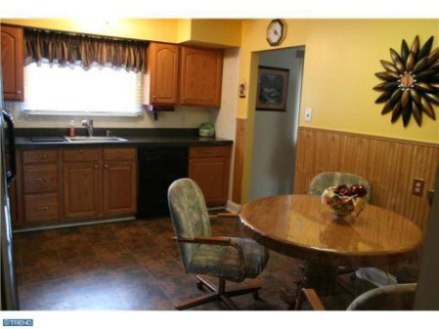
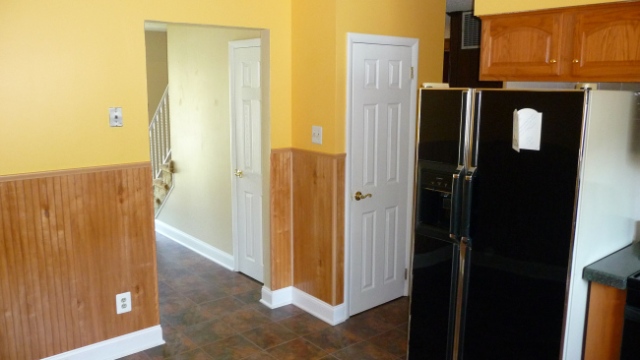
Now for our “accidental-50′s-inspired” after:
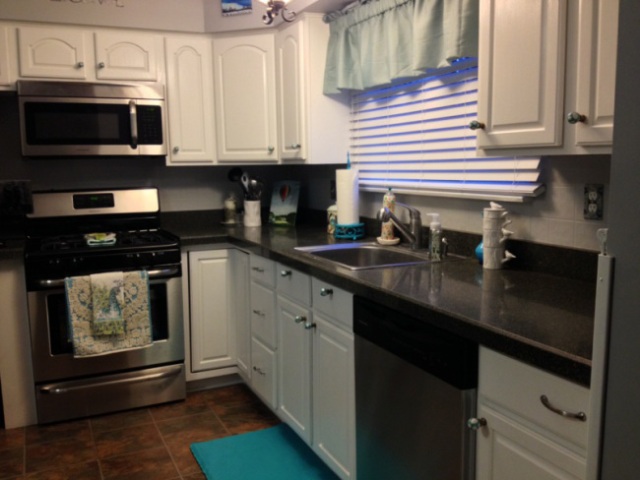
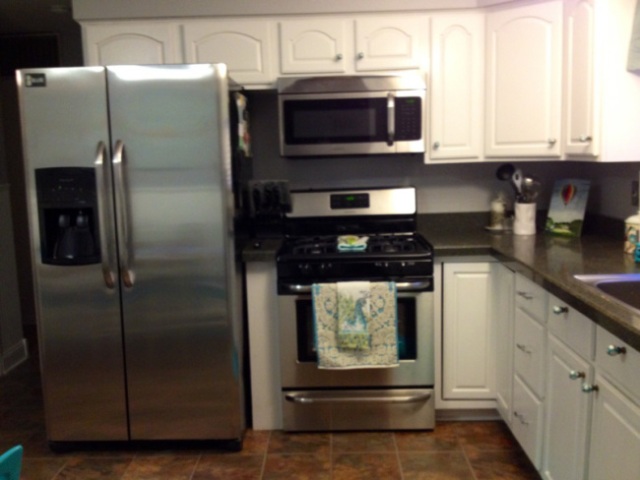
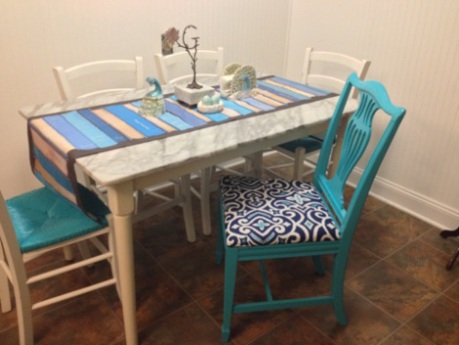
Don’t be afraid to play around with style! Do what inspires you and makes you happy, while remembering that there’s always room for 1950′s charm in some element or another. Until next time…
